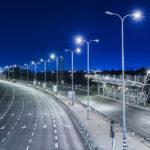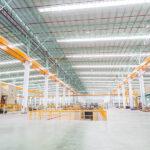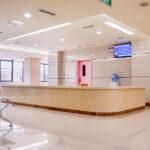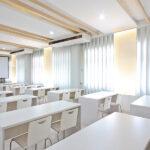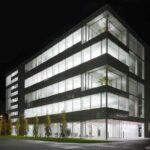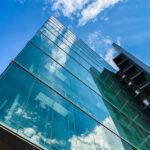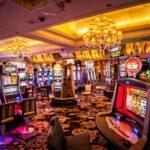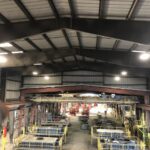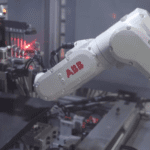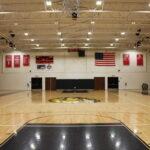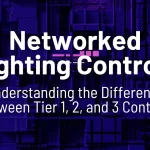Interior LED Lighting Solutions for Workspaces, Classrooms, and Common Areas
Home » Solutions » Lighting Solutions » Interior LED Lighting
Interior LED lighting upgrades improve visibility, comfort, and efficiency in offices, classrooms, corridors, restrooms, and other indoor spaces. These solutions reduce operating costs, modernize appearance, and support better productivity and well-being for occupants.
Table of Contents
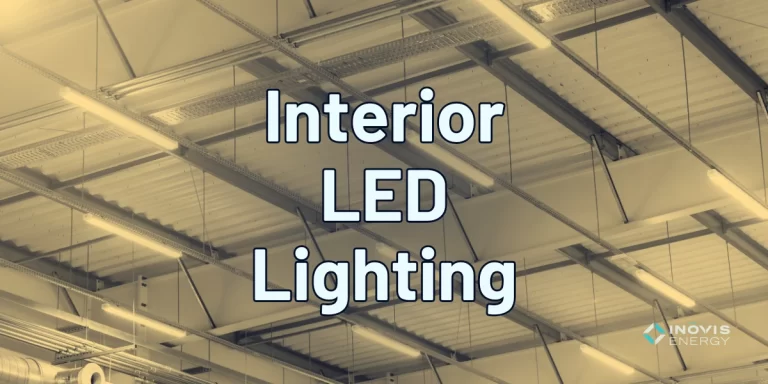
What Is Interior LED Lighting?
Interior LED lighting involves replacing or redesigning lighting systems inside your facility using energy-efficient, long-lasting LED fixtures. Unlike exterior or specialty systems, these solutions focus on:
-
Task lighting for desks and classrooms
-
General ambient lighting for offices, corridors, and restrooms
-
Accent lighting for display areas or hospitality spaces
-
Specialty lighting for high-bay interiors, stairwells, or elevators
Interior LED projects can be:
-
1-for-1 retrofits (e.g., LED tubes or troffer kits)
-
New fixture installations for better uniformity and appearance
-
Integrated with controls like occupancy sensors or daylight harvesting
-
Code-compliant with lighting power density (LPD) or automatic shutoff requirements
Why Upgrade Interior Lighting?
Key Benefits:
-
Cut lighting-related energy use by 50–75%
-
Improve light quality, uniformity, and color rendering (CRI)
-
Enhance occupant comfort and reduce eye strain
-
Support productivity and learning environments
-
Reduce maintenance with long-life fixtures
-
Enable lighting controls for additional savings
-
Improve aesthetics and visual consistency
How Interior LED Lighting Works
LED interior lighting replaces traditional fluorescent, halogen, or incandescent fixtures with efficient, low-maintenance alternatives. Options include:
-
Linear LED fixtures for offices, classrooms, and hallways
-
Downlights or troffers with dimmable and color-tuning features
-
High-bays or strip lighting for large interior spaces
-
Task and undercabinet lighting for workstations or kitchens
-
Control integration with sensors, dimmers, or building automation systems
These upgrades can be installed with minimal disruption to daily operations.
How Interior LED Lighting Reduces Energy Costs
Interior LED systems reduce energy consumption in several ways:
-
Lower wattage per fixture without sacrificing brightness
-
Optional occupancy sensors and daylight harvesting
-
Reduced cooling loads by producing less heat
-
Longer lifespan means fewer replacements and lower maintenance labor
Combined, these factors yield fast payback and ongoing energy savings.
Industries That Benefit from Interior LED Upgrades
Related Facilities
Offices, K–12 and higher education, healthcare facilities, libraries, government buildings, corridors, restrooms, and any space with fluorescent or legacy interior lighting systems.
Our Interior Lighting Upgrade Process
-
Facility Lighting Review – Inventory current fixtures and light levels
-
Design Consultation – Recommend fixture types and layout changes (if needed)
-
Control Strategy (Optional) – Add sensors or dimming to maximize savings
-
Product Selection – Choose fixtures based on application and code
-
Installation – Phased or after-hours install for minimal disruption
-
Incentive Support – Apply for utility rebates to lower project cost
Funding Options for Interior Lighting
Interior lighting upgrades often qualify for:
-
Prescriptive utility rebates
-
Small business lighting programs
-
On-bill financing
-
Lighting-as-a-Service options
-
Bundled packages with HVAC or envelope upgrades
Many projects are payback-neutral or cash-flow positive, especially in facilities with long lighting hours.
Some of Our Completed Interior LED Lighting Projects
Improve Indoor Lighting and Cut Energy Costs
Modern LED lighting enhances comfort, saves energy, and creates a more professional interior environment. Let us help you select the right fixtures and maximize your utility incentives.


